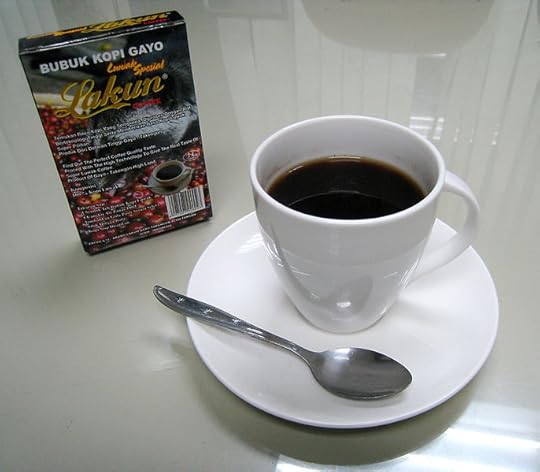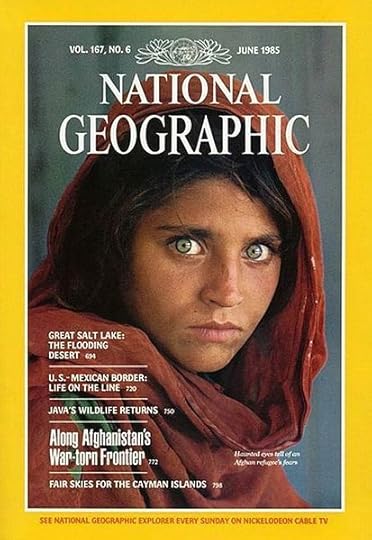Bathroom Readers' Institute's Blog, page 159
October 14, 2013
The Hackable Smart Toilet
Sitting on a smart toilet right now? Better be careful—you might get hacked!
 Japanese company LIXIL makes computerized gadgets for the home, office, and bathroom…including “smart toilets.” It’s latest innovation: the Inax Satis, a high-tech toilet that can you can program and control with your smartphone.
Japanese company LIXIL makes computerized gadgets for the home, office, and bathroom…including “smart toilets.” It’s latest innovation: the Inax Satis, a high-tech toilet that can you can program and control with your smartphone.
How can you control a toilet with your phone? Well, the Satis has a motorized lid, a bidet, and a deodorizer. Users can control the pressure of the bidet’s stream, or remotely close an open lid, for example, via an app called “My Satis.” The app can also be used to keep a daily log of bowel movements, if you’re into that level of documenting
your life.
However, anytime something has a computer in it, it means that it’s possible for somebody, somewhere, to hack it. In August, researchers at American digital security company Trustwave discovered that the Satis had some flaws that would allow it or the phone app to be easily hacked. Trustwave warned LIXIL, but never received a response, so they went public with their findings. Among the problems a digital prankster could cause: making the Satis’ lid snap shut, make it flush repeatedly, or make the temperature of the bidet stream really hot or really cold. (Or they could post your poop schedule on Facebook.)
But don’t worry, Americans. The My Satis app is currently only available in Japan, so if you’ve got a stateside Satis, you can still poo in peace.
October 11, 2013
A Crappy Cup of Joe
If you think these coffees taste crappy, you wouldn’t be wrong. They literally came from poop. They are coffee from feces.
 In one of the most inexplicable, perplexing, and kind of gross fads of all time, the hottest thing going in the world of coffee are beans that have passed through the digestive tracts of exotic animals. Adherents claim that the premium coffee that results is better than regular coffee. Why? The animals eat only the tastiest, ripest berries from coffee plants, then digest the outer berries, allowing the beans inside pass through their stomachs unharmed, but left coated with amino acids and enzymes. The animals’ feces is collected, with the beans removed, cleaned, and roasted, then ground into a beverage that fans claim is smoother and less bitter than other coffees because of those amino acids and enzymes from an animal’s digestive tract.
In one of the most inexplicable, perplexing, and kind of gross fads of all time, the hottest thing going in the world of coffee are beans that have passed through the digestive tracts of exotic animals. Adherents claim that the premium coffee that results is better than regular coffee. Why? The animals eat only the tastiest, ripest berries from coffee plants, then digest the outer berries, allowing the beans inside pass through their stomachs unharmed, but left coated with amino acids and enzymes. The animals’ feces is collected, with the beans removed, cleaned, and roasted, then ground into a beverage that fans claim is smoother and less bitter than other coffees because of those amino acids and enzymes from an animal’s digestive tract.
The most popular berries-to-butts-to-baristas blend is kopi luwak coffee, made from beans that have passed through the digestive system of the civet, an exotic mammal native to Asia and Africa, also known as a luwak or toddy cat. In 1991 British coffee importer Tony Wild became the first European to offer coffee made from pre-digested beans. The kopi luwak became so popular in Europe that its production is being industrialized, leading to widespread mistreatment of civets. Recently, Wild launched a campaign to end the production and consumption of the special coffee.
However, there’s a less cruel poop-coffee made from the leavings of rescued elephants in a Thai wildlife sanctuary. Black Ivory Coffee is sold only at Anantara Hotels, an Asian resort chain. Not only is this coffee exclusive, it’s the most expensive in the world. A single cup costs the equivalent of $25; a kilogram of means costs more than $2,000. By comparison, a pound of kopi luwak runs a relatively reasonable $160.
October 10, 2013
Robot, Heal Thyself!
Modern science has given us a substance that makes robots harder to kill. Way to go, science for giving us self-healing robots.
 In the Terminator films, robots sent from the future to kill humans are constructed of a core of liquid metal, allowing damaged or melted robots to easily reform themselves. A group of scientists at the Cidetec Centre for Electrochemical Technologies in Spain thought that this terrifying possibility should be a reality—they’ve developed what they call a “self-healing polymer.”
In the Terminator films, robots sent from the future to kill humans are constructed of a core of liquid metal, allowing damaged or melted robots to easily reform themselves. A group of scientists at the Cidetec Centre for Electrochemical Technologies in Spain thought that this terrifying possibility should be a reality—they’ve developed what they call a “self-healing polymer.”
The Cidetec Centre actually named their creation the Terminator Polymer, but claim their invention wasn’t made for time-travelling, human-killing robots. Instead, the goal is to improve the lifespan and durability of common plastic-and-metal consumer goods that, while expensive, frequently break, such as video game controllers, stereo speakers, and laptop computers. The Terminator polymer is reportedly the first automatically regenerating material ever designed and it’s capable of repairing imperfections in itself up to 97% in as little as
Scientists at the Cidetec Centre say that the regeneration is caused by a “metathesis reaction of aromatic disulphides, which naturally exchange at room temperature.” Or, in layman’s terms, the polymer works sort of like a combination of Velcro and a standard household sealant. In just a few years, this polymer could start popping up in everything…so watch out.
October 9, 2013
3 Actors and Their Musical Aspirations
Three celebrities with surprising musical aspirations…some of which didn’t quite work out.
 The action star and acclaimed film director
The action star and acclaimed film director
While co-starring as a tough guy on the TV western Rawhide in 1962, the tough guy actor, Clint Eastwood, recorded an album called Rawhide’s Clint Eastwood Sings Cowboy Favorites. The songs on the album weren’t pop or rock songs—they were story songs about cowboys and outlaws of the Old West, similar to what Marty Robbins might record. The album was not a hit and failed to expand Eastwood’s fanbase into the younger demographic. Eastwood gave up singing, but not music. He’s composed the score for eight of the movies he’s directed, including Mystic River and Million Dollar Baby.
The Oscar-winning actress
Sissy Spacek was one of the top actresses in Hollywood in the 1970s and early 1980s, starring in movies such as Badlands, Carrie, and Coal Miner’s Daughter, for which she won a Best Actress Oscar for her portrayal of country singer Loretta Lynn. Spacek followed up that role with a hit country music album of her own, but that wasn’t her first attempt at music. In the 1960s, she moved to New York with aspirations of becoming a professional musician. Spacek played acoustic guitar and sang at coffeehouses in Greenwich Village, and paid the bills by singing commercial jingles. In 1968, producer Artie Wayne hired Spacek to record a song he’d written to appeal to young people who weren’t caught up in the counterculture—he wanted to create a teen singer who looked like a hippie, but was actually conservative. Billed as “Rainbo,” the 18-year-old Spacek sang “John, You Went Too Far This Time,” which chastised John Lennon and Yoko Ono for appearing nude on the cover of their Two Virgins album. Wayne overestimated the number of people outraged by Lennon and Ono—the song flopped on radio and in record stores. Wayne dropped her from his label, and Spacek decided to give acting a try.
The psychedelic pioneer
Marty Balin went to college to become a painter, but after appearing in a production of West Side Story, he decided to become a singer instead. He got a deal at age 20 with a San Francisco label called Challenge, and in 1962 released two pop singles, directed to the teenage market: “Nobody But You” and “I Specialize in Love.” Both flopped, but not becoming a teen idol didn’t slow Balin down. He got caught up in the San Francisco folk music scene, forming a vocal quartet called the Town Criers. That didn’t go anywhere either, so Balin moved on to yet another musical style then taking root in San Francisco: psychedelic rock. In 1965, he helped form Jefferson Airplane as a guitarist and lead singer. He wrote many of the band’s signature songs, including “Volunteers.” Balin left the band in 1971 to start another psychedelic band called Grootna before returning to Jefferson Airplane in their “Jefferson Starship” era. Taking things full circle, Balin wrote and sang Jefferson Starship’s 1975 song “Miracles.” It was a soft rock ballad, closer to his teen pop days than psychedelia. But it worked—the single reached the top 10. Balin left the band again in 1978 for a solo career, and Jefferson Starship became Starship, a full-time soft rock band. Balin’s biggest solo hit: the syrupy 1982 ballad (and top 10 hit) “Hearts.”
October 8, 2013
Women in Men’s Sports
Women in sports: Here are the stories of a few who attempted to join
in men’s sports and how far they got.
Rhéaume was one of the best goalies in Canadian minor league hockey in the late 1980s. The Trois-Rivieres Draveurs, a Quebec team in a league that was just a step below the NHL, signed her in 1991—the first woman to play at that level. It was logical she’d try out for the NHL after that, another first. In 1992, Rhéaume was signed by the Tampa Bay Lightning as a free agent. She hit the ice for one period each in two exhibition games, and that was that. She was scored on twice, so she wasn’t the best goalie, but at any rate, she won a silver medal in the 1998 Olympics…for the Canadian national women’s team.
Brittney Griner
In 2013, Dallas Mavericks owner Mark Cuban made headlines when he publicly stated that he was considering drafting Griner, the top prospect in women’s college basketball. During her college career at Baylor University, the center scored 2,000 points and blocked 500 shots—a college basketball first for any player, male or female. Griner is 6’8” and the right size for the NBA, and a woman playing in the NBA would certainly be historic. But then the Phoenix Mercury of the WNBA drafted Griner with the #1 pick. The ongoing success and high play level of the WNBA will probably prevent many women from ever joining the NBA.
Nancy Lieberman
However, in the 1970s, a woman did play on an all-male pro basketball team. Lieberman was a top high school prospect, and at 18 led the U.S. women’s basketball team to a silver medal at the 1976 Olympics. After that she played college ball at Old Dominion, where she won a national Player of the Year Award and two national championships. There was no WNBA back then, so college was pretty much the end of basketball for most women. Not for Lieberman. She played in the United States Basketball League, a minor league, but an all-male league nevertheless. More interestingly, Lieberman went on to play for the Washington Generals…best known as the team that loses every night to the Harlem Globetrotters.
Sarah Thomas
In 2013, the NFL invited Thomas to be one of 21 finalists for a full-time officiating position for the 2014 season. This summer, she went through league training, calling scrimmages for the New Orleans Saints and spending a few days at the Indianapolis Colts’ training camp. Thomas would be the first permanent female ref in the NFL (the first woman overall: Shannon Eastin, a temporary ref during the 2012 referee lockout). Thomas has worked her way up through the officiating world. After regularly calling high school games, she was hired by Conference USA in 2007—the first woman to referee games at the top level of college football. In 2010, she became the first woman to officiate a college bowl game (the Little Caesars Bowl). How do the players feel about having a woman on the field? Saints safety Roman Harper told CNN, “She will be hated like the rest of them.”
October 7, 2013
Rush! Rush!
Recently honored with their own Canadian stamp, the group Rush was the first Canadian band inducted into the Rock and Roll Hall of Fame. Here are some other little known facts about Canada’s favorite prog-rock power trio from our newest release Uncle John’s Weird Canada Bathroom Reader.
 • Rush once opened for the retro group Sha Na Na. They were booed off stage.
• Rush once opened for the retro group Sha Na Na. They were booed off stage.
• The inspiration for the eight-minute, epic “By-Tor and the Snow Dog” on Fly By Night was the band’s road manager’s mouthy German shepherd, who would bite anyone who came near. “He’s a By-Tor,” the manager would say.
• Neal Peart was for many years a devotee of Ayn Rand, who emphasized the individual over society and denounced the poor as parasites. He has since denounced Rand’s doctrine of selfishness and called himself a “bleeding-heart libertarian.”
• Alex Lifeson was born Aleksandar Zˇivojinovi ́c to Serbian parents—his stage name is an almost literal translation of his Serbian name.
• Unlike other bands from the ‘70s, Rush never trashed hotel rooms. However, Lifeson was tasered, arrested, and had his nose broken in 2003 at the Ritz-Carlton hotel in Naples, Florida. The incident stemmed from what the guitarist called the hotel and sheriff’s office’s “incredibly discourteous, arro- gant, and aggressive behavior.” The hotel chain later settled for damages.
• To obtain a better sound, Geddy Lee gave up his onstage amplifiers, preferring to plug directly into the venue’s mixing console. The newly freed space on his side of the stage was then filled with random set pieces, including Maytag dryers, chicken rotisseries, and a vend- ing machine.
• Lee is the son of Jewish holocaust survivors from Poland. His name, Geddy, came from when a friend heard his mother’s pronunciation of his real name, Gary. He later legally changed his name.
• Bassist Geddy Lee is fishing buddies with another bassist, Les Claypool of Primus. (it’s unknown if they go bass fishing.)
********************* E-BOOK ALERT **********************
 Uncle John’s Weird Canada Bathroom Reader e-book is now available. Head over to one of the following e-book retailers to more information.
Uncle John’s Weird Canada Bathroom Reader e-book is now available. Head over to one of the following e-book retailers to more information.
October 4, 2013
8 Household Uses for Vodka
It’s more than just the basis of a great martini! Vodka doesn’t have a lot more to it than grain alcohol (or potato alcohol). That makes it a great, cheap household cleaner,
germ killer, wound healer…(NOTE: try these at your own risk.)
 • For your hair. Add an ounce or two to a mostly-full bottle of shampoo, and shake it to mix in. The vodka is effective at preventing oily buildup on the hair and scalp.
• For your hair. Add an ounce or two to a mostly-full bottle of shampoo, and shake it to mix in. The vodka is effective at preventing oily buildup on the hair and scalp.
• For removing goo. Have any hard surfaces where the price-tag or other sticker glue just will not go away no matter how much you scrape and peel? Saturate the price-tag residue with vodka. The alcohol will dissolve the adhesive.
• For bandages. Vodka can also dissolve the extremely sticky adhesive on bandages. Simply soak a cotton ball in the spirit and apply liberally to the bandage, which will fall off and save you the agony of ripping it off. NOTE: Only do this if you’re sure the wound beneath is healed—the alcohol can kill all living cells in a wound, the germs and the germ-fighters.
• For a better pie. Substitute a third of the water in pie crust recipes with vodka for a flakier result. This prevents the gluten, a protein found in flour, from making the crust rubbery and dry.
• For weeds. Many gardeners use vodka as the basis of a chemical-free, environmentally-safe herbicide. Mix an ounce of vodka with two cups of water and a few drops of liquid dish detergent in a spray bottle, and spray.
• For mildew and mold. The alcohol in vodka instantly kills household mold and mildew. It’s especially effective as a bathroom cleaner. Place pure vodka in a spray bottle, then spray the caulking around bathtubs and showers. No more gross mildew.
• For longer-lasting razors. Fill a mug with vodka, and when you’re done shaving with a disposable razor, wash off the blade and let it soak in the mug. The alcohol both disinfects the safety razor blade and prevents rusting.
• For vomit. While drinking too much vodka may cause vomiting, it can also, ironically, help remove vomit stains. Spray vodka on stained clothing or carpets, scrub with a brush, then blot it dry.
October 3, 2013
Weird Holiday: It’s German Unity Day
Get a little closer…the German way. It’s German Unity Day.
 Just about every country on the planet has some kind of national day. These public holidays involve citizens celebrating their country’s heritage and traditions. The observance date is often placed on a day that the country became independent of another country: America, for example, has Independence Day (July 4th), Canada has Canada Day (July 1st), and Macedonia has Den na Nezavisnosta (Sept. 8th). And these holidays almost always involves fireworks. Why? Because everybody loves fireworks.
Just about every country on the planet has some kind of national day. These public holidays involve citizens celebrating their country’s heritage and traditions. The observance date is often placed on a day that the country became independent of another country: America, for example, has Independence Day (July 4th), Canada has Canada Day (July 1st), and Macedonia has Den na Nezavisnosta (Sept. 8th). And these holidays almost always involves fireworks. Why? Because everybody loves fireworks.
Germany has a national holiday, too, but unlike those other countries, they celebrate unification, not separation. Tag der Deutschen Einheit, literally “German Unity Day,” falls on October 3rd and observes the day in 1990 that West Germany and East Germany combined back into a single Germany after more than three decades of separation.
Prior to the establishment of the holiday, Germany struggled to maintain a consistent National Day due to its troubled 20th century history (not to mention the fact that West Germany was democratic, and East Germany was under Communist control). Before World War II, Germany observed Constitution Day on August 11th. During the period of Nazi rule in the 1930s and ’40s, Germany celebrated Der Erste Mai (“The First of May”), known as International Workers’ Day in many other countries. While that’s a version of “Labor Day” around the world, in Germany the government organized celebrations explicitly to commemorate Hitler’s rise to power. (Ironically, workers and labor unions were not allowed to celebrate workers or labor during that time.) When the country split into two Germanys after the war, it became a celebration of Communism in East Germany and a minor day-off-work holiday in West Germany. Der Erste Mai is still a celebration of labor in modern Germany, but the true “national holiday” is now Tag der Deutschen Einheit.
Yet Germans are still bickering over it. Some officials think that the Tag der Deutschen Einheit holiday should be moved to November 9th in order to honor the day in 1989 that the Berlin Wall came down. Others wanted it switched to the first Sunday in October. (The latter plan was nixed because the public preferred to have it fall on a weekday so they could get a day off from work.)
In addition to giving them a reason to celebrate, Tag der Deutschen Einheit adds an extra day of drinking and merriment to many Oktoberfest celebrations. Along with celebrations around the country and the Ländermeile, a big street fest that’s held in a different state capitol every year, Berlin hosts a four-day festival near the Brandenburg Gate.
Watch this YouTube video to learn more about the holiday:
Or watch this one to get into the reunification spirit.
October 2, 2013
RIP Tom Clancy
Author Tom Clancy passed away yesterday at the young age of 66. Here is a look back at how The Hunt for Red October became a best-selling thriller.
In 1984, a Maryland insurance broker named Tom Clancy wrote The Hunt for Red October, a naval thriller about a Soviet submarine captain who tries to defect to the United States.
Clancy, a military buff, had never published a book before—his only “author” credits were for a three-page article on the MX missile, and a single Letter to the Editor. And the Naval Institute Press had never published a work of fiction. But they liked Clancy’s manuscript, so they bought it and printed 14,000 copies.
A Friendly Hand: President Ronald Reagan read The Hunt for Red October after it was recommended to him by a friend.. .and that’s when a reporter just happened to ask what he was reading. Reagan praised the book as “the perfect yam” and “non-put-downable.”
That did the trick. The Hunt for Red October, which until then had received little attention and was selling slowly, shot up the bestseller lists. Ultimately, it sold more than 5.4 million copies, setting Tom Clancy on a course to become one of the best-selling authors of the 20th century.
Article first published in Uncle John’s All-Purpose Extra-Strength Bathroom Reader.
September 30, 2013
The Search for the National Geographic Afghan Girl
This October marks the 125th anniversary of National Geographic. To celebrate, we take a look at the most famous photographs of the 20th century: the National Geographic Afghan Girl. This story was originally published in Uncle John’s Slightly Irregular Bathroom Reader.
In December 1984, a National Geographic photographer named Steve McCurry visited the Nasir Bagh refugee camp on the Afghan/Pakistan border while covering the war between the Soviet Union and Afghanistan. While there he snapped a photograph of a 12-year-old girl with haunting blue-green eyes. The girl had been living in the camp ever since Soviet helicopters had bombed her village five years earlier, killing both her parents.
McCurry didn’t have a translator with him that day, so he never got the girl’s name. But the photograph, which appeared on the cover of the June 1985 issue, went on to become the single most recognized photograph in National Geographic’s 125-year history and one of the most reproduced images in the world.
NO FORWARDING ADDRESS
As the image’s fame grew, so did the mystery: Who was the girl?
“I don’t think a week has gone by for 15 years,” McCurry told National Geographic in 2002, “that I don’t get requests from people trying to get information about her.”
McCurry went on assignment to the region 10 more times in the years that followed, and each time he searched for the Afghan girl, but couldn’t find her. Then in January 2002, he and a team from National Geographic made one more trip to the Nasir Bagh refugee camp to try to track her down. The girl—who by then would have been a woman of about 30—apparently hadn’t lived in the camp for several years. But McCurry hoped they might find someone who knew her. The camp was scheduled to be demolished, so it was their last chance. Once Nasir Bagh was gone, there would be little hope of ever finding her.
COULD IT BE HER?
At the refugee camp the team pursued several false leads before finally meeting a man who claimed to recognize the girl in the photograph.
This guy seemed authentic. He said the woman was his neighbor’s wife and even offered to go and get her.
Several days later, the man returned with the woman’s husband.
In Afghanistan, women do not meet men other than family members, so McCurry was not allowed to see her. He sent a female member of the team, Carrie Regan, to photograph her face, so that it could be compared against the photos taken in 1984.
One look at the new photos was all it took. McCurry was certain that this woman, whose name was Sharbat Gula, was the same person he’d photographed 17 years earlier. But to be sure, he had photo analysts compare the irises of the girl in the 1984 photos with those of the woman in the 2002 photos. Result: They were 99.9% certain that Sharbat was the girl (an FBI analysis of her facial features came to the same conclusion). McCurry quickly negotiated with the family and not only received permission to meet Gula, but also to photograph her a second time for the April 2002 issue of National Geographic.
UPDATE
So what had happened to the “Afghan girl” in the intervening years? She had lived at Nasir Bagh until 1992 (she returned to Afghanistan during a lull in the fighting between the Soviets and Afghan rebels). She married a baker and had four daughters, one of whom died in infancy. Life for Gula had been hard and it showed in her face. Although only about 30 (she doesn’t know exactly when she was born), she looked much older. One thing hadn’t changed, though: “Her eyes are as haunting now as they were then,” says McCurry. And although Gula is the subject of one of the most famous photographs of the 20th century, it was only in 2002 that she saw the photo for the first time.
Gula has returned to her normal life. National Geographic provides medical assistance and other aid, and is seeing that her daughters receive an education. But the magazine will not reveal where she lives, ensuring that the girl with the haunting eyes will likely live out the rest of her life as she wishes—in anonymity, never to be heard from again.





